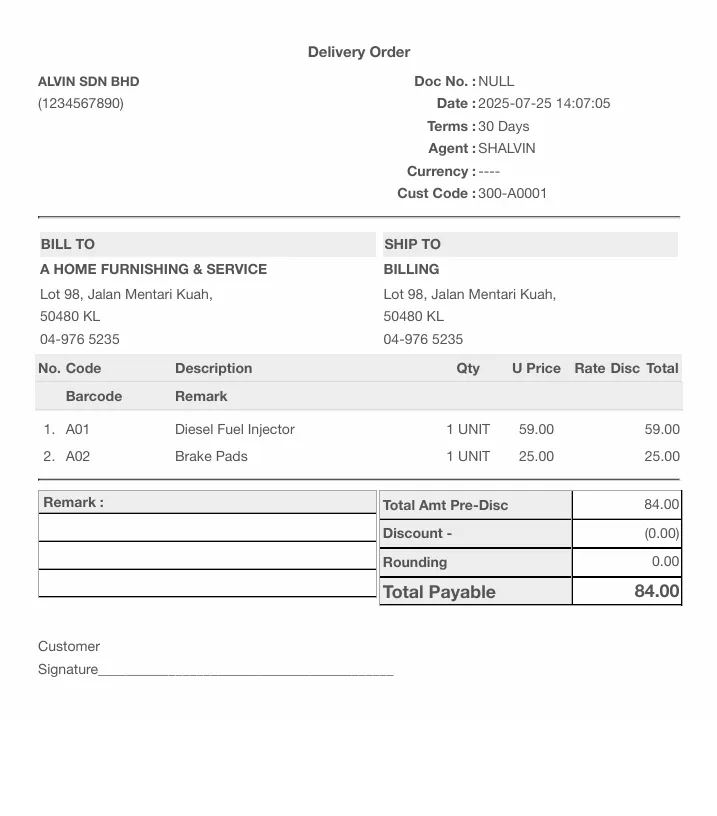
22 Proven Closing Sales Techniques: From Zero To Sales Hero!
The ultimate goal for every salesperson is simple: closing sales. It’s the moment that proves all your hard work has paid off. But let’s face it—getting there isn’t always easy. You need to actively listen to your prospects, understand their pain points, tackle objections, and present your product or service in a way that makes them see its value.
It’s essential to arm yourself with the right strategies and mindset. Whether you're a seasoned professional or just starting out, there’s always room to refine your approach. Therefore, to help you out, we’ve rounded up some proven tips and techniques to guide you toward closing sales with confidence and ease.
Author: Christopher Yip
Date: Nov 20, 2024
Closing Sales Best Practices:
Before you dive into sales closing techniques, it’s crucial to learn the best sales practices first. These foundational skills serve as the building blocks for you to set the stage for a successful deal.
1. Know Your Customer's Needs
Before anything else, make sure you understand what problems your product or service solves for your customers. If your solution isn’t a good fit, don’t waste time chasing leads who aren’t interested. Focus on those who truly need what you’re offering.
2. Target the Right People
Your chances of closing a sale skyrocket when you focus on the right prospects. Use CRM tools to understand buyer intent and always aim to engage with decision-makers. When you’ve got the right target, use the right closing techniques, and your success rate will soar.
3. Preparation Is Key
Sales reps who make closing look effortless are actually experts in preparation. Research your prospect before the first contact—check their website, LinkedIn, and any other public profiles. The more you know, the more tailored your pitch will be.
4. Listen More, Talk Less
Follow the 70/30 rule—spend 70% of the time listening, 30% talking. When you truly listen to your prospects, you uncover their pain points, gain valuable feedback, and create a stronger connection. Understanding them is half the battle won.
5. Be Transparent
Always be upfront with pricing and any potential roadblocks. If there’s bad news, share it honestly. And don’t be afraid to ask for what you need—whether it’s a sales appointment or a commitment. Being clear sets the right expectations.
6. Follow-up, Follow-up, Follow-up
Never skip the follow-up after meetings with a brief call or email to assess how things went and identify areas for improvement. Consistent follow-up helps keep you top of mind, shows your commitment, and allows you to refine your approach.
Different Types of Sales Closing Techniques:
Now that you’ve got the best practices for closing sales, it’s time to apply them with the right techniques.
1. Now-or-Never Close
The Now-or-Never Close is your secret weapon to spark action. It’s about creating urgency—a compelling reason for the prospect to act immediately. When people feel they might miss out, they’re more likely to make a decision.
How It Works:
You offer a special benefit or highlight a time-sensitive deal that nudges the prospect off the fence. But here’s the trick: keep it genuine. Fabricated urgency can backfire.
Example of sales closing lines:
“We have a 20% discount for customers who sign up today. If you commit now, I can fast-track your setup and ensure we deliver by next week.”
This technique is highly effective because it capitalizes on a universal truth: people hate missing opportunities.
2. Summary Close
By summarizing everything your customer have shown interest in—features, benefits, or solutions—you solidify their understanding and build excitement for the value they’ll get.
How It Works:
Reiterate the deal, highlight the benefits, and gently lead the conversation toward closing. This approach is perfect for prospects who need a clear reminder of why they should say yes.
Example of sales closing lines:
“So, you’ll be getting the Premium Package, which includes 24/7 support, a free one-year subscription, and a dedicated account manager. When can we get started?”
This sales technique helps prospects see the complete value, making it harder for them to resist.
3. Sharp Angle Close
A prospect asks for a discount or an added feature. Instead of hesitating or agreeing outright, you turn the tables in your favor by tying their request to an immediate commitment. This technique surprises them and keeps you in control.
How It Works:
Agree to their request—but only if they’re willing to close the deal immediately. It’s bold, but it works because it ties a concession to action.
Example of sales closing lines:
“If I include the extra hours of onboarding at no additional cost, will you be ready to sign today?”
This technique works best when you have pre-approval from your manager for such offers. It creates momentum and closes deals swiftly.
4. Assumptive Close
Confidence is contagious. The Assumptive Close embodies this idea by treating the deal as if it’s already done. This subtle psychological move can nudge a hesitant prospect to follow through.
How It Works:
Throughout your pitch, speak as though the prospect has already committed. This positive reinforcement builds momentum and removes doubt from their mind.
Example of sales closing lines:
“Once we start the onboarding process, your team will save at least 10 hours weekly. Would you prefer our team to begin Monday or Wednesday?”
This sales closing techniques keeps the conversation flowing toward the goal—signing the deal—without creating unnecessary resistance.
5. Take-Away Close
Sometimes, less is more. The Take-Away Close leverages the power of scarcity by offering a reduced version of the deal when a prospect hesitates.
How It Works:
If a prospect balks at the price or scope, remove a feature or service and reframe the deal. This shift forces them to reassess what they might lose rather than what they gain.
Example of sales closing lines:
“To fit your budget, we can remove the customization feature and still provide everything else at a reduced cost. Does this work for you?”
More often than not, this sales technique makes prospects reconsider and opt for the original offer.
6. Soft Close
A gentle nudge can sometimes achieve what a strong push cannot. The Soft Close lets you introduce the benefits of your product while gauging the prospect’s interest—without pressure.
How It Works:
Pose a low-impact question that aligns the prospect’s needs with your solution. This technique creates an open dialogue, allowing you to build rapport and trust.
Example of sales closing lines:
“If we could reduce your operational costs by 20% and improve productivity by 15%, would that align with your goals?”
It’s like planting a seed—the prospect begins to visualize how your solution fits their needs.
7. Alternative Close
People like having choices. The Alternative Close gives them a sense of control while steering them toward a decision—often in your favor.
How It Works:
Present two or more options, both leading to a sale. Highlight the value of the option you prefer them to choose subtly.
Example of sales closing lines:
“Would you like the Pro Plan with advanced analytics and priority support, or the Standard Plan, which is a more basic package?”
The beauty of this technique is that it frames the conversation as a choice, not a yes-or-no question.
8. Unique Offer Close
Let’s be honest—everyone loves to feel special. The Unique Offer Close taps into this by tailoring an exclusive deal for the prospect, especially for high-value clients.
How It Works:
When a prospect hesitates, sweeten the pot with a unique benefit, like a custom discount or free service, making the deal hard to resist.
Example of sales closing lines:
“If you sign today, I’ll include six months of free support, a $1,500 value. How does that sound?”
This close works wonders for prospects on the verge of commitment but needing an extra nudge.
9. Opportunity Cost Close
Fear of loss is a powerful motivator. With the Opportunity Cost Close, you highlight what the prospect stands to lose by not taking action.
How It Works:
Paint a picture of potential challenges or missed opportunities without your solution. This creates urgency and positions your product as the obvious choice.
Example of sales closing lines:
“If you delay, you could miss out on achieving your year-end targets due to inefficiencies. Wouldn’t it be better to act now and secure a smoother process?”
This approach appeals to the rational and emotional sides of decision-making.
10. The Puppy Dog Close
Who doesn’t love a free trial? The Puppy Dog Close allows prospects to experience your product firsthand, reducing risk and increasing their confidence in buying.
How It Works:
Offer a trial or demo, ensuring they experience the benefits before committing. Provide enough support to make the trial meaningful but without pressure.
Example of sales closing lines:
“Would you like to try our software free for 30 days? If you find it helpful, we can discuss plans afterward.”
This technique turns uncertainty into trust and helps close deals with skeptical prospects.
11. The Empathy Close
People buy from those they trust. The Empathy Close builds this trust by showing genuine understanding of the prospect’s situation.
How It Works:
Listen actively and acknowledge their concerns. Frame your solution as a way to address their specific challenges, showing that you care about their success.
Example of sales closing lines:
“I understand that transitioning to a new platform can be daunting. That’s why our team offers end-to-end support to make it seamless. Would you feel more confident knowing we’ll handle the heavy lifting?”
Empathy creates a connection, making prospects more likely to say yes.
12. The Objection Close
Uncertainty kills deals. The Objection Close is about addressing lingering doubts head-on, paving the way for a decision.
How It Works:
Ask if there’s anything holding the prospect back. Listen carefully, resolve objections, and guide the conversation toward closing.
Example of sales closing lines:
“Is there anything stopping you from moving forward with this today?”
This direct approach builds confidence and resolves concerns in real-time.
13. The Buyer's Remorse Close
People often feel uncertain about their decisions, even after committing. The Buyer’s Remorse Close helps to reassure your prospect that they’ve made the right choice.
How It Works:
You address their concerns preemptively, providing reassurance and emphasizing the long-term benefits of their decision.
Example of sales closing lines:
“Totally understand that it can feel like a big decision. But think about the savings you’ll see in the next few months. You’re making a wise move for your business.”
It builds confidence in the decision they’ve made or are about to make.
14. The Investment Close
This technique flips the script. Instead of focusing on cost, you focus on the value and return on investment (ROI) the prospect will gain by making the purchase.
How It Works:
You show the prospect that their purchase is not just an expense, but an investment in their future. You help them visualize the return they’ll receive.
Example of sales closing lines:
“Think of this as an investment in your business. With the 20% efficiency improvement, you’ll see a return within the first 90 days. How does that sound to you?”
It shifts the prospect’s mindset from spending money to making a smart financial decision.
15. The Emotional Close
People often make decisions based on emotions, and then rationalize them with logic. The Emotional Close taps into those feelings, guiding the prospect’s decision by creating an emotional connection.
How It Works:
You focus on the deeper emotional benefits that your product provides, whether it’s peace of mind, security, or the excitement of new possibilities.
Example of sales closing lines:
“Imagine how much easier your day will be knowing this solution is in place. Think about how much stress will melt away once it’s live.”
It’s about making them feel good about the choice they're about to make.
16. The Take Action Close
This is all about driving your prospect to take immediate action. Once they’ve agreed to the details, you immediately ask them to do something.
How It Works:
You don’t give them time to think too much or delay the decision. You prompt them to take action right away.
Example of sales closing lines:
“Let’s go ahead and get you started today. I can email you the contract, and we can get the ball rolling.”
This eliminates any space for doubt and leads to fast results.
17. The Price Drop Close
Sometimes, prospects hesitate due to price concerns. The Price Drop Close offers them a discount or reduced rate in exchange for an immediate decision.
How It Works:
You present a lower price but only if the prospect commits right away. It plays into their desire to get a deal, all while closing the sale on your terms.
Example of sales closing lines:
“If we could offer you a 10% discount if you sign today, would you be willing to move forward?”
This closes the gap between hesitation and action by making the deal more appealing.
18. The Testimonial Close
Social proof can be incredibly persuasive. The Testimonial Close involves sharing success stories or testimonials from other satisfied customers to show your product’s effectiveness.
How It Works:
You share stories or quotes from customers in similar situations to demonstrate how your solution has worked for others.
Example of sales closing lines:
“Many of our clients in your industry have seen a 30% improvement in efficiency within the first 90 days. Would you like to join them?”
Seeing that others have benefited from the product can ease any final doubts.
19. The Reverse Close
The Reverse Close is a clever tactic where you ask the prospect why they might not want to move forward with the sale. This can often make them reconsider their objections and focus on the positives.
How It Works:
Instead of asking why they would buy, you ask why they wouldn’t. This forces the prospect to justify their hesitation, often highlighting areas where you can clarify or address concerns.
Example of sales closing lines:
“What would prevent you from going ahead with this solution today?”
It shifts the perspective and forces them to find reasons to buy rather than avoid.
20. The Direct Close
Sometimes, simplicity is key. The Direct Close cuts to the chase and asks the prospect to commit without any fancy techniques. It’s straightforward and works when the conversation has reached a point where the prospect is ready.
How It Works:
Simply ask for the sale in a confident, clear, and direct manner. No fluff, just the ask.
Example of sales closing lines:
“Are you ready to move forward with this solution today?”
This works best when the prospect is almost ready and just needs that final push.
21. The Door-in-the-Face Close
The Door-in-the-Face technique is a sales strategy where you make a large request first—one that you expect will be rejected—and then follow it up with a smaller, more reasonable request.
How It Works:
The idea is that the second, smaller request will seem more acceptable in comparison to the larger one, making the prospect more likely to say "yes" to it.
Example of sales closing lines:
"Would you be willing to pay $2,000 for this package? (Prospect declines) Well, how about we go with the $1,200 option? It includes everything you need."
Works best in situations where you want to create contrast and make a smaller, more reasonable request appear more appealing.
22. The Ben Franklin Close
This sales closing technique taps into decision-making psychology by encouraging prospects to weigh the pros and cons of a situation. It's a method that appeals to logic and rational thinking, helping the prospect see the full picture, including the value of the product or service being offered.
How It Works:
It often involves you guiding them through this process, asking them to consider the benefits (pros) of the offer versus any potential drawbacks (cons).
Example of sales closing lines:
Imagine you're selling a software solution, and the prospect is uncertain because of its price. You might say, “Let’s list out the benefits and challenges. On the positive side, you’ll get improved efficiency, lower operational costs, and 24/7 support. On the other hand, the upfront cost is higher than you expected. But, when you factor in the ROI from the improved productivity and long-term savings, the cost starts to look very reasonable.”
It works best for prospects who are analytical, as it appeals to their logical side by listing the positive aspects and weighing them against the negatives.
Additional Sales Tips: Common Sales Mistakes To Avoid
1. Poor Communication Etiquette
Simple things like chewing gum, background noise, or unclear speech can ruin a deal. Keep things professional to build trust and ensure your message is clear.
2. Jumping to Conclusions
Just because a prospect is uncertain doesn’t mean they’ve made up their mind. Don’t assume their hesitation is a “yes” or “no”—use the right techniques to guide them toward a decision.
3. Pretending to Know Everything
If you're unsure about a product or service detail, don’t bluff. Be honest, check the facts, and follow up with the correct information. Honesty goes a long way in building trust.
4. Being Defensive
Simple things like chewing gum, background noise, or unclear speech can ruin a deal. Keep things professional to build trust and ensure your message is clear.
5. Being Negative
Rejections and objections are part of the game. Don’t let them discourage you. Stay persistent, and always leave the door open for future opportunities.
6. Pressure Selling
Hard closing techniques are outdated. Pushy sales tactics feel like you're rushing to meet your own quota, not solving the customer's problem. Focus on empathy—selling is about addressing their needs, not pressuring for a quick sale.
7. Only Closing at the End
Closing sales isn’t just a final step; it’s an ongoing process. From the first interaction to the final signature, you’re constantly guiding the prospect toward the sale—whether it's scheduling the next meeting or addressing concerns. Closing is continuous, not a single event.
In Conclusion
Sales is a skill that gets better with practice. The more you work at it, the more confident and effective you become. Just like in chess, your opening moves can set the stage for how things end. When your entire sales process is thoughtful and on point, closing the deal doesn’t feel like a fight—it feels like teamwork between you and the buyer.
Other than mastering sales closing techniques, leveraging the right tools is just as important. SalesHero is a mobile sales app designed to simplify sales workflow by automating repetitive tasks like data entry, stock checking, and creating invoices. By streamlining these processes, This powerful sales app frees you to focus on what truly matters—building relationships and closing sales faster. It’s like having a personal assistant in your pocket, ready to boost your efficiency and help you hit your sales targets!
FAQs
How to Avoid Sounding Robotic or Inauthentic When Using Sales Scripts
Sales scripts are tools, not rules. Here’s how to keep your pitch sounding real:
1. Treat scripts as a guide, not gospel: Use them as a roadmap for your conversation, but don’t stick to them word-for-word. Adapt your tone and phrasing to match the person you’re speaking with.
2. Make it your own: Practice until the key points feel natural and conversational. Focus on understanding the core messages rather than memorizing every line.
3. Engage, don’t just talk: Start by building rapport. Ask open-ended questions, actively listen to their needs, and respond genuinely. Personalizing your conversation makes your script feel alive and tailored.
How to Measure the Effectiveness of Sales Closing Techniques and Scripts
You can’t improve what you don’t measure. Keep track of these key metrics:
1. Win and close rates: How many calls or meetings turn into sales? Compare your results when using different closing techniques or scripts to see what works best.
2. Customer feedback: Ask customers about their experience. Did your approach feel helpful? Did they feel understood? Use this insight to tweak and refine your methods.
3. Review and practice: Listen to call recordings or role-play scenarios with colleagues to evaluate your delivery. Pinpoint areas where you can better connect, clarify, or close.
4. Time to close: Track how long it takes to move a lead through the sales funnel. Faster doesn’t always mean better, but it can highlight techniques that effectively drive decisions.
Additional Qualities for Successful Sales Closings
Closing a sale isn’t just about the script—it’s about how you connect and deliver. Here’s what makes the difference:
1. Confidence and enthusiasm: Show genuine excitement about your product or service. Your energy can be contagious, making the prospect more likely to trust your recommendation.
2. Empathy and listening: Understand their pain points, goals, and concerns. Active listening shows you’re not just pushing a sale—you’re solving a problem.
3. Ethical urgency: Create urgency in a way that respects the customer. Limited-time offers or exclusive deals can help motivate action, but avoid overusing this tactic.
4. Patience and persistence: Don’t push too hard. Some prospects need time to decide, so stay in touch and nurture the relationship without being overbearing.
What Is a Good Closing Sales Question?
A strong closing question should encourage decision-making while staying open and conversational. Here are examples for different intents:
1. To confirm readiness - “Does this solution feel like the right fit for your needs?”
2. create urgency - “Would you like to take advantage of this offer before it ends?”
3. To clarify concerns - “Is there anything holding you back from moving forward today?”
4. To personalize the next step - “When would be the best time to schedule your onboarding session?”
5. To build excitement for action - “Are you ready to start seeing results right away?”
By blending a thoughtful approach with strategic questions, you’ll create smoother, more successful closings.
What is the best way to handle rejection when a sale does not close?
Handling rejection gracefully is a part of the sales process. Instead of taking it personally, you can take it as an opportunity to learn and improve. Maintain professionalism, thank the customer for their time, and explore whether there are any underlying reasons for their decision.



